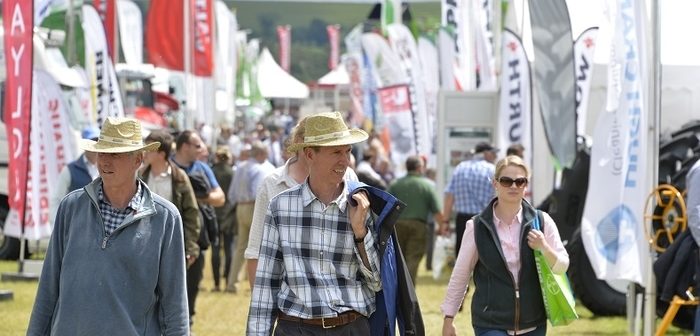NIAB is celebrating its long history in varieties and seeds with the largest variety demonstration area the organisation has ever staged at this year’s Cereals Event.
Across the entire NIAB stand (stand no 515) there are 110 different crop and variety plots, providing a backdrop to the latest technical advice and research in variety choice, independent agronomy, soil and rotation management, crop genetics and data science. The variety demonstration area alone includes 40 winter wheat and 27 winter oilseed rape varieties, either already established on the AHDB 2018/19 Recommended List or candidates.
NIAB’s technical director Bill Clark says: “As we approach our centenary in 2019 we felt this year would be an ideal opportunity to get back to our roots and highlight NIAB’s unparalleled variety expertise. We were the first to develop variety information lists for farmers in the 1930s, with the first official Recommended List published in 1944, and we were the driving force behind the development of statutory seed certification and testing. Within our organisation are people who ‘know’ varieties – how to manage them and how to optimise inputs to get the best from them. And we spend a lot of time telling people exactly how to do that.
“Our untreated plots will give visitors a head start in their variety selection for next season, with differences in disease resistance and performance between the varieties clearly evident. NIAB TAG specialists will be available to provide expert, independent advice and comment on variety choice across all cereal, oilseed and pulse crops.”
Optimising nitrogen fertiliser use
The variety demonstration sits alongside a showcase of plant breeding tools and technologies that are helping shape optimal nitrogen use on farm, both in the UK and in India. NIAB researchers are identifying wheat varieties, from across its wide-ranging genetics and breeding research, which show a high nitrogen use efficiency in the field. The research is also characterising the physiology of wheat varieties grown under different nitrogen levels, aiming to understand the regulation of the plant’s response and possible methods of modifying the response through further plant breeding technologies.
NIAB’s pre-breeding lead Dr Phil Howell explains that the ultimate aim is to reduce global nitrogen demand. “The research forms part of the Cambridge-India Network for Translation Research in Nitrogen, or CINTRIN, project. We are collaborating with researchers in India, sharing our approach and findings, to achieve low nitrogen requirement for wheat varieties grown in the UK and India and translate the research to additional crops such as sorghum and millet.”
The NIAB stand also includes exhibits showcasing:
- the latest developments on yellow rustand field pathogenomicswith the NIAB UK Cereal Pathogen Virulence Survey team, highlighting variety x race interactions with a range of wheat plots individually inoculated with different yellow rust races;
- impact of technology on crop management, including the use of modelling tools, big data, crowd-sourcing and precision farming techniques with NIAB Digital;
- plant disease research and new diagnostic techniques in field beans;
- improving skills development in the arable sectors – transferring the latest innovations and developments in crop research, knowledge and legislation into practice on farm with a range of practical and online courses;
- NIAB TAG Membership services including the latest crop production advice and farmer-led research, field days, agronomy trials results, unique regional variety information and weekly agronomy updates through the season.
The Soil Pit
The popular 20 m long, 2 m deep walk-through Soil Pit exhibit (stand no 512), managed jointly by NIAB and the Cereals Event organisers Comexposium Haymarket, is an opportunity to check out the local soil profile at eye level and study the rooting of a range of cover and cereal crops. With NIAB leading on two AHDB soil projects, ‘The Soil Biology and Soil Health Partnership’ and ‘The Rotations Research Partnership’, our soil specialists will be providing advice on soil management, rotations, cultivations and fertility building, and cover crops including crop choice, agronomy and management.




